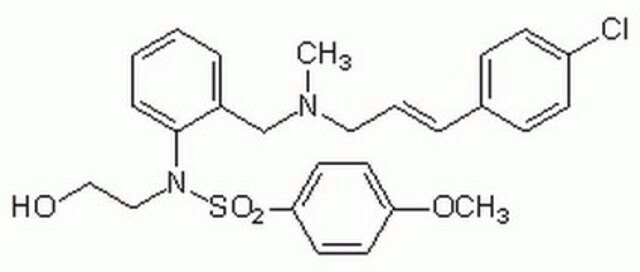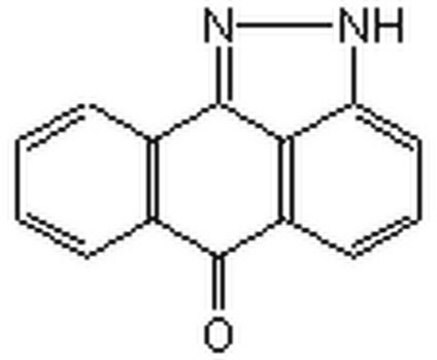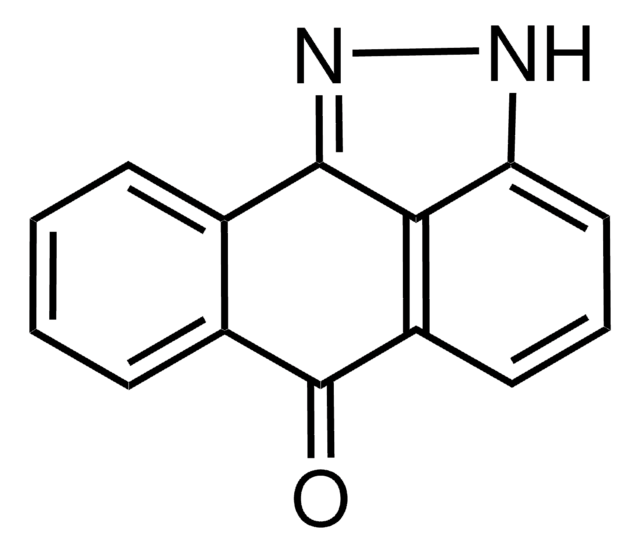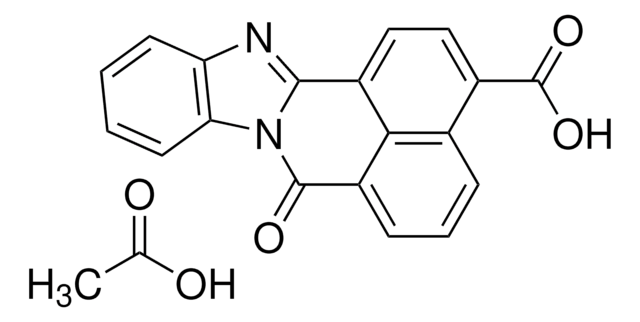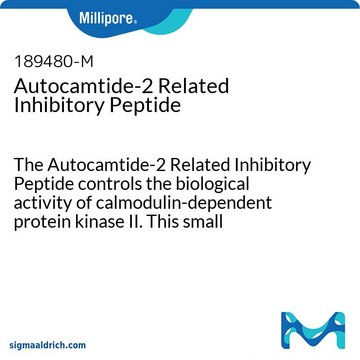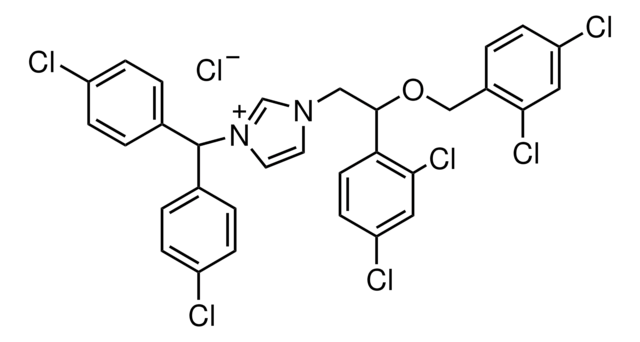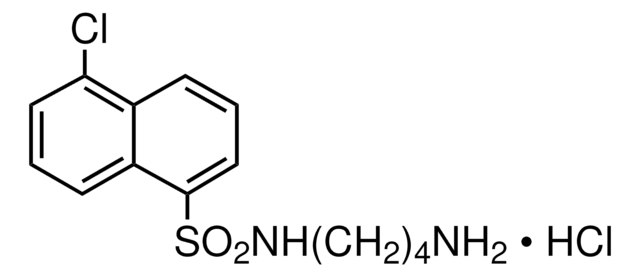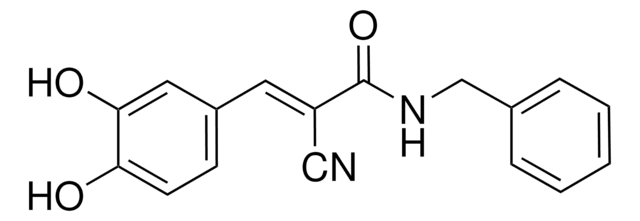K1385
KN-93
≥98% (HPLC)
Synonym(s):
N-[2-[N-(4-Chlorocinnamyl)-N-methylaminomethyl]phenyl]-N-(2-hydroxyethyl)-4-methoxybenzenesulfonamide phosphate salt, N-[2-[[[3-(4′-Chlorophenyl)-2-propenyl]methylamino]methyl]phenyl]-N-(2-hydroxyethyl)-4′-methoxybenzenesulfonamide phosphate salt
About This Item
Recommended Products
biological source
synthetic (organic)
Quality Level
Assay
≥98% (HPLC)
form
powder
color
white
solubility
DMSO: 1 mg/mL
H2O: soluble
storage temp.
2-8°C
SMILES string
OP(O)(O)=O.COc1ccc(cc1)S(=O)(=O)N(CCO)c2ccccc2CN(C)C\C=C\c3ccc(Cl)cc3
InChI
1S/C26H29ClN2O4S.H3O4P/c1-28(17-5-6-21-9-11-23(27)12-10-21)20-22-7-3-4-8-26(22)29(18-19-30)34(31,32)25-15-13-24(33-2)14-16-25;1-5(2,3)4/h3-16,30H,17-20H2,1-2H3;(H3,1,2,3,4)/b6-5+;
InChI key
NNKJTPOXLIILMB-IPZCTEOASA-N
Looking for similar products? Visit Product Comparison Guide
Application
- as an inhibitor to block αCaMKII (Ca2+/calmodulin-dependent protein kinase IIα)
- as CaMKII inhibitor to pre-treat hippocampal slices
- to treat the cells, to alter the cytoskeleton (CSK) structure and function during the experiment
Biochem/physiol Actions
Features and Benefits
Caution
Storage Class Code
11 - Combustible Solids
WGK
WGK 3
Flash Point(F)
Not applicable
Flash Point(C)
Not applicable
Personal Protective Equipment
Certificates of Analysis (COA)
Search for Certificates of Analysis (COA) by entering the products Lot/Batch Number. Lot and Batch Numbers can be found on a product’s label following the words ‘Lot’ or ‘Batch’.
Already Own This Product?
Find documentation for the products that you have recently purchased in the Document Library.
Customers Also Viewed
Our team of scientists has experience in all areas of research including Life Science, Material Science, Chemical Synthesis, Chromatography, Analytical and many others.
Contact Technical Service